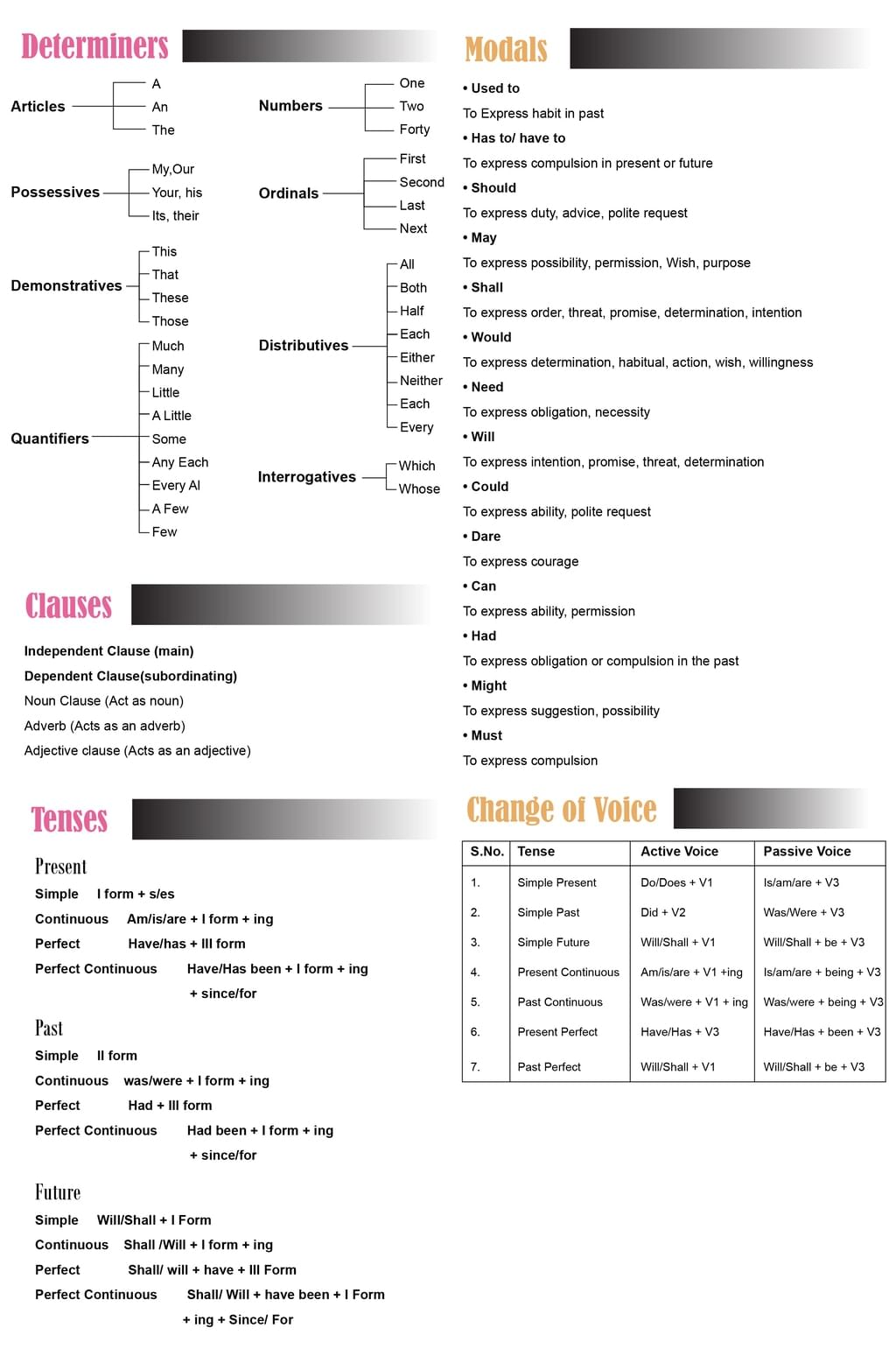Class 9 Exam > Class 9 Notes > Hindi Class 9 (Sparsh and Sanchayan) > Mind Map: English Grammar
Mind Map: English Grammar | Hindi Class 9 (Sparsh and Sanchayan) PDF Download

The document Mind Map: English Grammar | Hindi Class 9 (Sparsh and Sanchayan) is a part of the Class 9 Course Hindi Class 9 (Sparsh and Sanchayan).
All you need of Class 9 at this link: Class 9
|
60 videos|252 docs|77 tests
|
FAQs on Mind Map: English Grammar - Hindi Class 9 (Sparsh and Sanchayan)
| 1. What is the difference between a noun and a pronoun? |  |
Ans. A noun is a word that represents a person, place, thing, or idea, while a pronoun is a word that takes the place of a noun in a sentence. For example, in the sentence "John is a doctor, and he loves his job," "John" is a noun, and "he" and "his" are pronouns.
| 2. What are the different types of verb tenses? |  |
Ans. There are three main types of verb tenses: past, present, and future. Each of these tenses can be further divided into simple, continuous, perfect, and perfect continuous forms. For example, in the sentence "She will be eating dinner tonight," "will be eating" is the future continuous tense.
| 3. How do I identify the subject and predicate in a sentence? |  |
Ans. The subject of a sentence is the noun or pronoun that performs the action or is being described, while the predicate is the part of the sentence that contains the verb and provides information about the subject. To identify the subject and predicate, look for the noun or pronoun that the verb is referring to and the information provided by the verb.
| 4. What is the difference between an adverb and an adjective? |  |
Ans. An adverb is a word that describes or modifies a verb, adjective, or another adverb, while an adjective is a word that describes or modifies a noun or pronoun. For example, in the sentence "She quickly ran to the store," "quickly" is an adverb modifying the verb "ran," while in the sentence "He is wearing a red shirt," "red" is an adjective modifying the noun "shirt."
| 5. How do I determine the correct subject-verb agreement in a sentence? |  |
Ans. Subject-verb agreement means that the subject and verb in a sentence must agree in number. If the subject is singular, the verb should be singular, and if the subject is plural, the verb should be plural. For example, in the sentence "The cat sleeps," the singular subject "cat" agrees with the singular verb "sleeps," while in the sentence "The cats sleep," the plural subject "cats" agrees with the plural verb "sleep."
|
60 videos|252 docs|77 tests
|
Download as PDF
Related Searches














